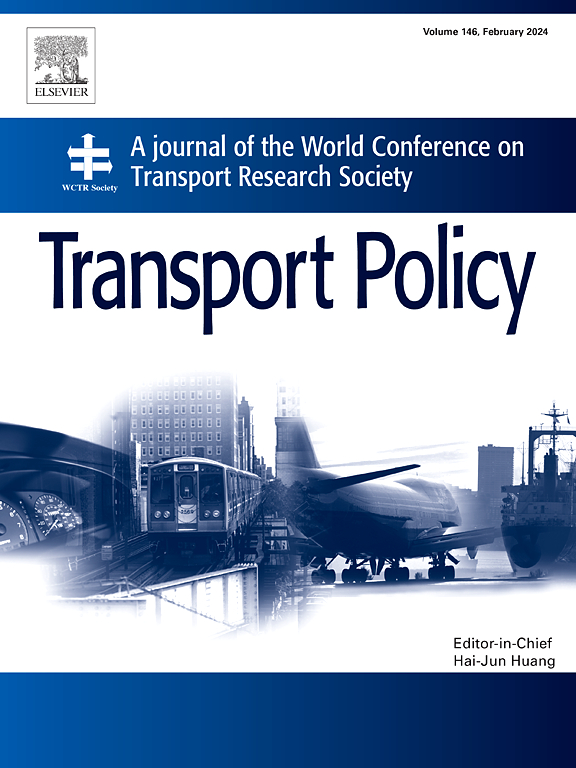Older adults’ perceptions and behaviors on driving: A mixed method study
IF 6.3
2区 工程技术
Q1 ECONOMICS
引用次数: 0
Abstract
Understanding older adults' driving behavior based on their personal assessment, along with challenges they encounter when driving will support community leaders and policymakers to develop effective supportive strategies for their safety on the road. This study uses a mixed methodology approach, including a survey and an interview to examine older drivers' perceptions and concerns regarding their driving habits. Collecting data from cities in Texas and Nevada, to achieve diverse perspectives on older adults who live in environments with different land use patterns and road geometry.
Using the survey to understand the older adults' self-evaluated driving skills, where most consider themselves very good drivers even though they have some challenges, based on the roads, their reflexes changing over the years, and the impact of their physical and cognitive health. Supplementing the survey results with the interview allows the study to identify older drivers' major challenges including adverse weather, construction sites, and in-vehicle distractions. Supporting that visual and cognitive challenges are limiting older adults’ driving patterns (e.g., not driving at night).
To avoid any conflicts with aggressive drivers, the older adults are passively driving, and if accessible, utilizing in-vehicle technologies to increase their safety. However, older drivers suggested that all drivers, particularly younger drivers, should have access to more educational materials. They recommended that older adults' licensing requirements should be evaluated based on their health condition rather than age. Participants’ concern regarding roadway infrastructure elements and driver behavior can be resolved through improvements in road design and driver education.
老年人对驾驶的看法和行为:混合方法研究
根据老年人的个人评估来了解他们的驾驶行为,以及他们在驾驶过程中遇到的挑战,将有助于社区领导者和政策制定者为老年人的道路安全制定有效的支持策略。本研究采用了混合方法,包括调查和访谈,以研究老年驾驶者对其驾驶习惯的看法和担忧。从得克萨斯州和内华达州的城市收集数据,以实现对生活在不同土地使用模式和道路几何形状环境中的老年人的不同视角。通过调查了解老年人对驾驶技能的自我评价,大多数老年人认为自己的驾驶技能非常好,尽管他们在道路、多年来的反应能力变化以及身体和认知健康的影响等方面存在一些挑战。通过访谈对调查结果进行补充,本研究得以确定老年驾驶员面临的主要挑战,包括恶劣天气、建筑工地和车内分心。为了避免与具有攻击性的驾驶员发生冲突,老年驾驶员采取被动驾驶的方式,如果可以的话,还可以利用车载技术来提高安全性。不过,老年驾驶员建议,所有驾驶员,尤其是年轻驾驶员,都应获得更多的教育材料。他们建议,应根据老年人的健康状况而不是年龄来评估其驾照要求。与会者对道路基础设施要素和驾驶员行为的担忧可以通过改进道路设计和驾驶员教育来解决。
本文章由计算机程序翻译,如有差异,请以英文原文为准。
求助全文
约1分钟内获得全文
求助全文
来源期刊

Transport Policy
Multiple-
CiteScore
12.10
自引率
10.30%
发文量
282
期刊介绍:
Transport Policy is an international journal aimed at bridging the gap between theory and practice in transport. Its subject areas reflect the concerns of policymakers in government, industry, voluntary organisations and the public at large, providing independent, original and rigorous analysis to understand how policy decisions have been taken, monitor their effects, and suggest how they may be improved. The journal treats the transport sector comprehensively, and in the context of other sectors including energy, housing, industry and planning. All modes are covered: land, sea and air; road and rail; public and private; motorised and non-motorised; passenger and freight.
 求助内容:
求助内容: 应助结果提醒方式:
应助结果提醒方式:


